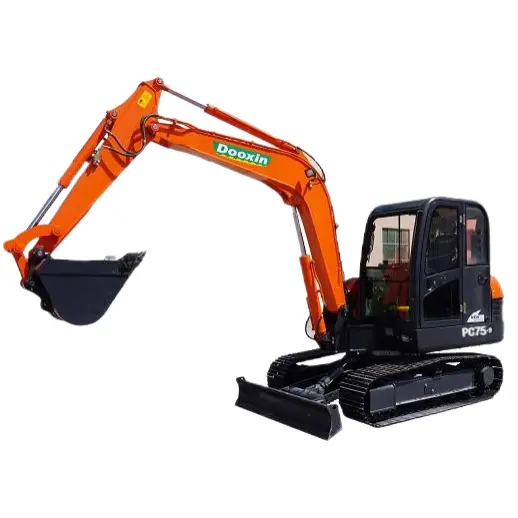What Is The Difference Between A Crawler Excavator And An Excavator
2025-11-03
When I first joined PENGCHENG GLORY, one of the most common questions customers asked me was, “What’s the real difference between a Crawler Excavator and a regular excavator?” It’s an important question, especially for buyers who want the best value for their projects. After years of working with clients across construction, mining, and road-building industries, I’ve learned that understanding this difference helps you make smarter investment decisions and improve your work efficiency.
So, let’s break it down in simple, practical terms based on what we’ve seen in the field.
What Makes A Crawler Excavator Different From Other Excavators
A crawler excavator is mounted on tracks, while a standard excavator may use wheels. This structural difference leads to key distinctions in performance, stability, and terrain adaptability.
Here’s a professional comparison based on our real-world experience:
| Feature | Crawler Excavator | Wheel Excavator (Standard Excavator) |
|---|---|---|
| Mobility | Moves using metal or rubber tracks; ideal for uneven or muddy terrain | Moves on wheels; best for paved or urban environments |
| Stability | Excellent balance and grip on soft or rough surfaces | Slightly less stable on loose ground |
| Speed | Slower travel speed | Faster travel between sites |
| Maintenance | More durable under heavy loads but requires periodic track checks | Easier and cheaper to maintain due to simpler structure |
| Ground Pressure | Low, distributes weight evenly | Higher, can damage soft ground |
| Applications | Mining, forestry, construction, and heavy-duty digging | City roadwork, utility maintenance, and light construction |
| Fuel Efficiency | Consumes more fuel due to heavier structure | More fuel-efficient for light work |
Which Excavator Performs Better On Rough Terrain
From my field experience, crawler excavators perform far better in harsh conditions like mud, hillsides, or loose soil. The tracks create a wide surface area, distributing weight evenly and preventing sinking. This makes them perfect for projects where traction and stability matter more than speed.
When Should You Choose A Wheel Excavator Instead
If your project involves frequent site changes, paved roads, or urban construction, a wheel excavator might be the better option. It travels faster, requires less maintenance, and can switch between locations without a trailer. Many of our clients use them for municipal work or quick-turnaround jobs where mobility is key.
How Do Crawler Excavators Improve Work Efficiency
At PENGCHENG GLORY, we’ve designed our crawler excavators with enhanced hydraulic systems, reinforced undercarriages, and operator-friendly cabins. These upgrades mean smoother digging, longer durability, and higher productivity on-site. By combining stability with raw power, our machines help reduce downtime and maintenance costs — something every construction manager appreciates.
Key performance highlights from our models include:
-
Advanced fuel-efficient engines for lower operational costs
-
Heavy-duty tracks for maximum traction
-
Ergonomic cabin design for operator comfort
-
Smart control systems for precise movement
How Can You Choose The Right Excavator For Your Project
Here are a few quick tips we share with our clients:
-
Check your terrain – Soft or uneven ground favors crawler excavators.
-
Evaluate transport needs – If you move sites often, a wheel excavator saves time.
-
Consider your workload – Heavy digging and lifting require track-based power.
-
Think about long-term costs – Crawler excavators may have higher upfront costs but last longer under tough use.
Ready To Find The Perfect Excavator For Your Needs
At PENGCHENG GLORY, we’re more than just an equipment manufacturer — we’re partners in your success. Whether you need a reliable Crawler Excavator for a large-scale project or guidance on selecting the right model, our engineering team is here to help.
👉 Contact us today to learn more, request a quote, or discuss your specific project requirements. Let’s find the excavator that fits your work perfectly and keeps your operations running efficiently.
